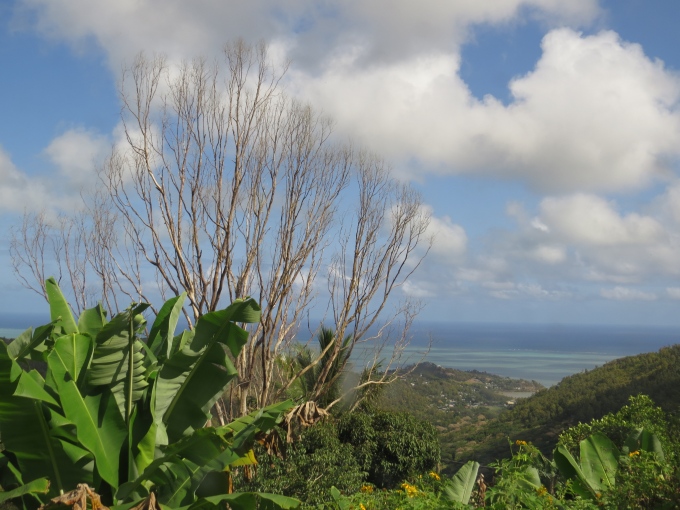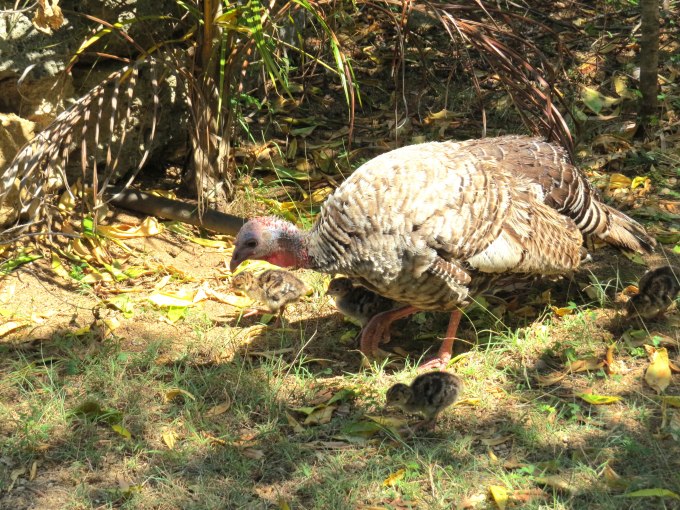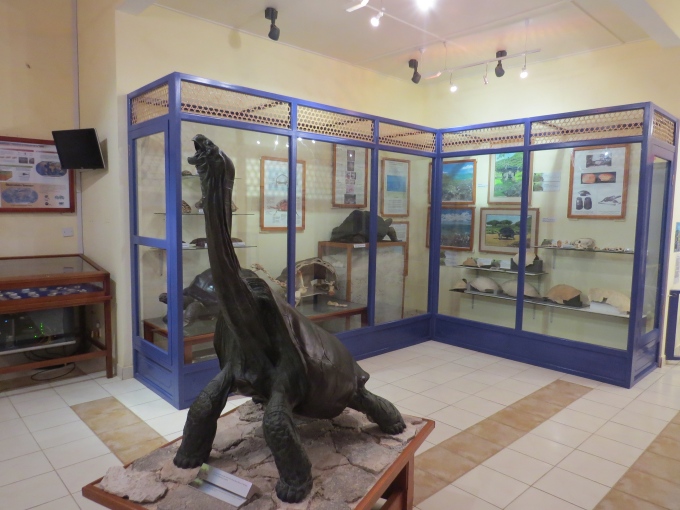Anse Quitor, Ile Rodrigues
While we were in the museum, a reasonable group of people arrived and so what we thought would be a small intimate group tour became a rather large crowd. The guide was bilingual. He would provide a long dissertation in French and then about a sentence in English. Sometimes the French was easier to understand than his English, but we got the gist of what he was saying. We were provided with hard hats for the cave portion of the tour and headed out, en masse, along a rocky trail.

We climbed down a large flight of wooden stairs onto a boardwalk which wound through thick foliage. Our first stop was a close-up view of several of the rare “blonde bats” (pteropus roderiensis) that are endemic to the island. They were on the verge of extinction back in 1970 when only 120 remained, but intense conservation efforts and captive breeding has increased their numbers to near 3,000 now. Looking at their little faces, you can see why some folks call them flying fox.

We entered the wide expanse of Tiyel Canyon with high limestone walls all around us and there, before us, were the tortoises. There are purportedly over 2,000 individuals here, comprised of two different species: Giant Aldabra and Radiated … neither of which are endemic to Rodrigues, but are endemic to the other Mascerene Islands particularly Aldabra Island in the Seychelles. We've seen giant tortoises in the past … the Galapagos, for instance, but certainly not as many and certainly not as active as these guys.
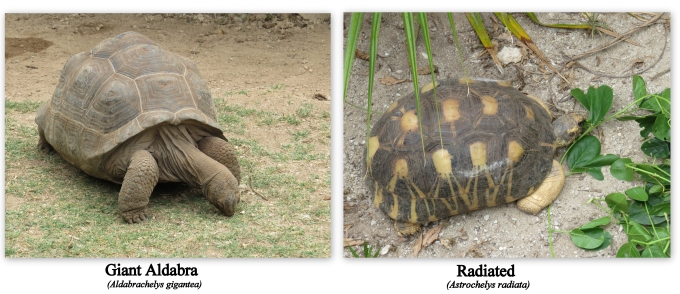
We were encouraged by the tour guide to pet them, especially stroking under their long necks which they seemed to not only tolerate, but to enjoy. The oldest and largest tortoise was Henri … estimated to be 110 years old and about 550 lbs (250kg). I'm not sure petting a tortoise ever appeared on my bucket list, but I'm glad I got the chance to do it.
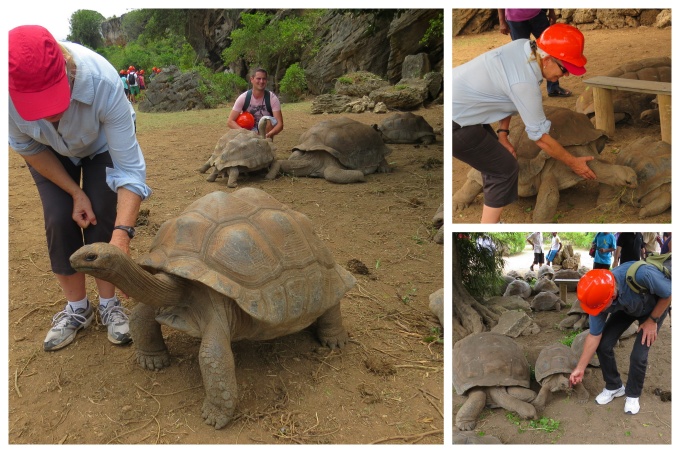
We wandered around amongst these gentle old giants, stroking some and observing them as they ate and hauled their huge shells to shady areas to relax. It was a Jurassic Park sort of feeling.

We climbed another long flight of stairs out of the canyon and looked down from the rim for a more expansive view of the tortoises below, then headed to the Grande Caverne. Quite honestly, we've seen and toured many caves, so we weren't all that enthused about seeing more, but there was no alternative. After tolerating the bright, hot sun for over an hour, the cool temps of the cave were quite appealing.

The tour guide prattled on in French, with an interspersed phrase in English once in awhile. We had planned on an hour tour and we were over two hours at this point, very ready for a sit-down. On we trudged, through narrow passages, ducking to avoid hitting our heads. I'm glad we had on hard hats, because I bonked my head several times en route with a very loud thud. The tour guide did the obligatory spiel on stalactites and stalagmites, then shut off of all the lights to show how dark it was in a cave and then we proceeded up the stairs to bright daylight and hot temps once again.

Back at the Reserve Center, we found a bench and shared some water and apples before we began the long trek back to the bus stop. For some reason, the return trip always seem shorter and easier and there's always something new to see. When Joshua Slocum visited Rodrigues back in the 1890s, he remarked about buying a whole sack of pomegranates. We noticed a tree with pomegranate fruit on it on our walk back, but we hadn't seen any in the marketplace.

One of the “hope to sees” on my list was the Rodrigues fody and the Rodrigues warbler … both endemic species and endangered. I wasn't quite sure what I was looking for, but when I saw a bright scarlet bird in a tree, I was pretty sure it was a fody. Well, it was, but it was a Madagascar red fody, not a Rodrigues one, and quite common, it seems. We'll continue our search for a Rodrigues fody and warbler another day.

The bus schedules in Rodrigues are interesting in that they are “suggestions” of times rather than actual schedules. We knew what time we were dropped off, but we weren't sure what time the bus was returning. When we had asked, the answer was every 40 minutes. “What time in the afternoon at this particular stop?”, we queried. “40 minutes after the previous bus”, was the answer. In other words, we had no idea what time to expect the bus. We saw a young lady with a parasol walking at a fast pace in the general direction of the bus. We kept pace with her and as we neared the main road, we could hear the heavy-duty engine of the bus approaching. She ran ahead and flagged down the bus and we tromped along behind her. We were glad for a seat and a rest for the one hour ride back to Port Mathurin, although after our estimated 20km (12miles) of walking, we were a bit stiff when the bus arrived at the port and we still had a ways to walk back to the boat. Another ibuoprofen evening, but a day well spent.















